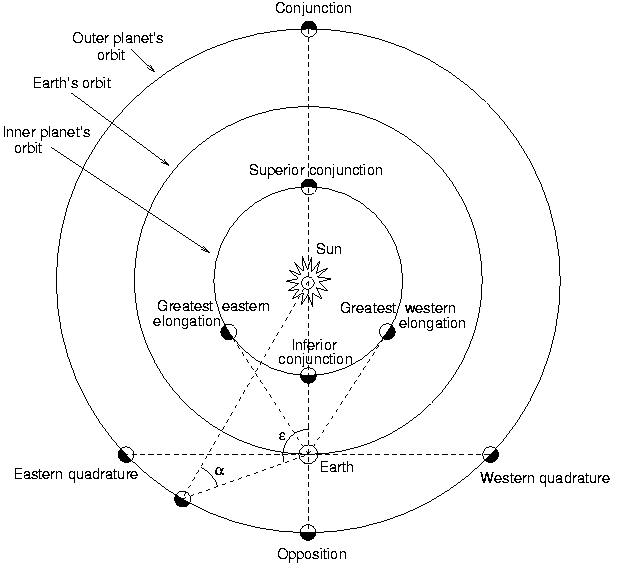A conjunction of Venus occurs when Earth, Venus and the Sun are all lined up together. Imagine looking down at the Solar System from above and being able to straight line that goes through Earth, Venus and the Sun. That’s a conjunction of Venus.
There are two kinds of conjunctions that can happen: superior conjunction and inferior conjunction. A superior conjunction of Venus happens when Earth and Venus are on opposite sides of the Sun. Seen from above, it goes, Earth – Sun – Venus. An inferior conjunction of Venus occurs when Venus and Earth are on the same side of the Sun. So, if you drew a line it would go Sun – Venus – Earth.
From here on Earth, it’s not possible to see either inferior or superior conjunctions of Venus. When Venus is in a superior conjunction, it’s on the opposite side of the Sun, and the glare of the Sun is too bright to see it. The same situation happens with an inferior conjunction. In this situation, Venus is in between Earth and the Sun, and lost in the glare.
Because of the orbits of Venus and Earth, Venus very rarely passes directly in front of the Sun from our vantage point. This is called a transit of Venus, and it does occur every hundred years or so in pairs. The last transit of Venus was in 2004, and the next one will happen in 2012.
When there’s an inferior conjunction of Venus, the planet is approximately 41 million km away. It’s possible for Venus and Earth to get as close as 38.2 million km, but that happens rarely.
When seen through a telescope, Venus goes through phases, just like the Moon. When Venus is approaching its inferior conjunction, it becomes a thin sliver – but very bright. When it’s approaching a superior conjunction, we see it starting to look fully illuminated. It’s impossible to see Venus either in full inferior or superior conjunction because it gets lost in the glare of the Sun either way.
We have written many articles about Venus for Universe Today. Here’s an article about Venus’ wet, volcanic past, and here’s an article about how Venus might have had continents and oceans in the ancient past.
Want more information on Venus? Here’s a link to Hubblesite’s News Releases about Venus, and here’s a link to NASA’s Solar System Exploration Guide on Venus.
We have recorded a whole episode of Astronomy Cast that’s only about planet Venus. Listen to it here, Episode 50: Venus.
Reference:
NASA: The Solar System

